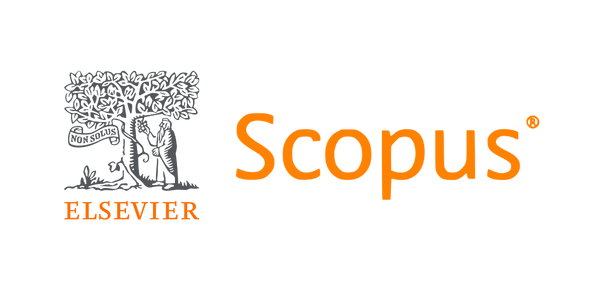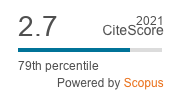AI-driven nonlinear optimization for knowledge extraction and pattern analysis in IoT-enabled data mining systems
Keywords:
Internet of Things, nonlinear optimization, data mining, pattern analysis, artificial intelligence, knowledge extractionAbstract
In this paper, systematic exploration of the application of AI-based nonlinear optimization to elicit knowledge and pattern study in the IoT-enabled data mining takes place. The paper explains the complexity and heterogeneity of IoT data on scale by declaring and resolving nonlinear optimization problems using the latest AI methods, including genetic algorithms and neural networks. On smart grid, city traffic, and industrial data, a modular computing framework is constructed consisting of fog computing over edges, cloud storage and embedded AI engines. The result of the experiment is that nonlinear optimization algorithms are better than the classical linear and clustering algorithms in accuracy and effectiveness, which tells of the presence of multi-layered latent structures that are significant in the analytics of IoT. The paper lists the advantages of the nonlinear complexities of determining the actionable patterns then outlines the outlooks of the future development of multi-objective modeling, federated learning, and privacy-respectful analytics in dynamic IoT environments.
References
Ullah, I. (2025). Integration of data science with the intelligent IoT (IIoT). Journal of Data Science and Intelligent Systems, 2(1), 115–134.
Marengo, A. (2024). Navigating the nexus of AI and IoT: A comprehensive review. Journal of Artificial Intelligence and IoT, 29(4), 211–228.
Rahman, M.S. (2023). Machine learning and internet of things in industry 4.0. Journal of Industrial Automation, 19(2), 151–165.
Meziane, H. (2023). A survey on performance evaluation of artificial intelligence for IoT security. Nature Scientific Reports, 13, 46640.
El-Sofany, H. (2024). Using machine learning algorithms to enhance IoT system security. Nature Scientific Reports, 13, 62861.
Čolaković, A. (2023). IoT systems modeling and performance evaluation. Procedia Computer Science, 211, 112–134.
Verma, A. (2021). Edge-cloud computing performance benchmarking for IoT applications. Future Generation Computer Systems, 119(5), 41–54.
Alkhayyal, M. (2024). Recent developments in AI and ML for IoT: A systematic review. Frontiers in Computer Science, 3(2), 15–35.
Egbuhuzor, N.S. (2024). The potential of AI-driven optimization in enhancing network management: A review. Management Optimization Review, 1(1), 43–58.
Mondal, S. (2022). Situation-aware IoT data generation towards performance evaluation. IEEE Internet of Things Journal, 9(24), 56182–56197.
Muralidharan, J. (2024). Advancements in 5G technology: Challenges and opportunities in communication networks. Progress in Electronics and Communication Engineering, 1(1), 1–6. https://doi.org/10.31838/PECE/01.01.01
SteelEye Group. (2023). Application of artificial intelligence and machine learning in smart industries. Journal of Smart Technology, 12(2), 111–129.
Orozco, L., & Ttofis, H. (2025). Energy harvesting techniques for sustainable embedded systems: Design and applications. SCCTS Journal of Embedded Systems Design and Applications, 2(1), 67–78.
Alon, I. (2025). The future of artificial intelligence: Insights from recent Delphi studies. Journal of AI Futures, 23(3), 195–211.
Egbuhuzor, N.S. (2024). Performance optimization of nonlinear EH technology in IoT-enabled networks. Nature Scientific Reports, 13, 6673.
Piechowiak, W. (2023). IoT systems modeling and performance evaluation. Computer Science Journal, 157(4), 655–667.
Kaur, R. (2023). Edge-cloud computing performance benchmarking. Future Generation Computer Systems, 119(5), 41–54.
Weiwei, L., Xiu, W., & Yifan, J. Z. (2025). Wireless sensor network energy harvesting for IoT applications: Emerging trends. Journal of Wireless Sensor Networks and IoT, 2(1), 50-61.
Tamm, J. A., Laanemets, E. K., & Siim, A. P. (2025). Fault detection and correction for advancing reliability in reconfigurable hardware for critical applications. SCCTS Transactions on Reconfigurable Computing, 2(3), 27–36. https:doi.org/10.31838/RCC/02.03.04
Uvarajan, K. P. (2024). Advanced modulation schemes for enhancing data throughput in 5G RF communication networks. SCCTS Journal of Embedded Systems Design and Applications, 1(1), 7-12. https://doi.org/10.31838/ESA/01.01.02
Prasath, C. A. (2025). Adaptive filtering techniques for real-time audio signal enhancement in noisy environments. National Journal of Signal and Image Processing, 1(1), 26–33.
Wilamowski, G. J. (2025). Embedded system architectures optimization for high-performance edge computing. SCCTS Journal of Embedded Systems Design and Applications, 2(2), 47–55.
El Haj, A., & Nazari, A. (2025). Optimizing renewable energy integration for power grid challenges to navigating. Innovative Reviews in Engineering and Science, 3(2), 23–34. https://doi.org/10.31838/INES/03.02.03
Pandikumar S, Ali Bostani, Aravindan Srinivasan, G. Menaka, J. Chandhini, R. Sabitha, & K. Sathishkumar. (2025). Fuzzy logic-driven nonlinear optimization for resource allocation in 6G networks . Results in Nonlinear Analysis, 8(2), 239–252.
VenkateshMuniyandi. (2024). AI-Powered Document Processing with Azure Form Recognizer and Cognitive Search. Journal of Computational Analysis and Applications (JoCAAA), 33(05), 1884–1902.
Muniyandi, Venkatesh, Pradeep Kumar Muthukamatchi, and PrashanthiMatam. "Scalable Microservices Architecture Using Azure Kubernetes Service (AKS)." 2025 International Conference on Computing Technologies & Data Communication (ICCTDC). IEEE, 2025.
R. Chellu, "Integrating Google Cloud Identity and Access Management (IAM) with Managed File Transfer for Data Protection," 2025 International Conference on Computing Technologies (ICOCT), Bengaluru, India, 2025, pp. 1-8, doi: 10.1109/ICOCT64433.2025.11118469.
Downloads
Published
How to Cite
Issue
Section
License
Copyright (c) 2025 Results in Nonlinear Analysis

This work is licensed under a Creative Commons Attribution 4.0 International License.



